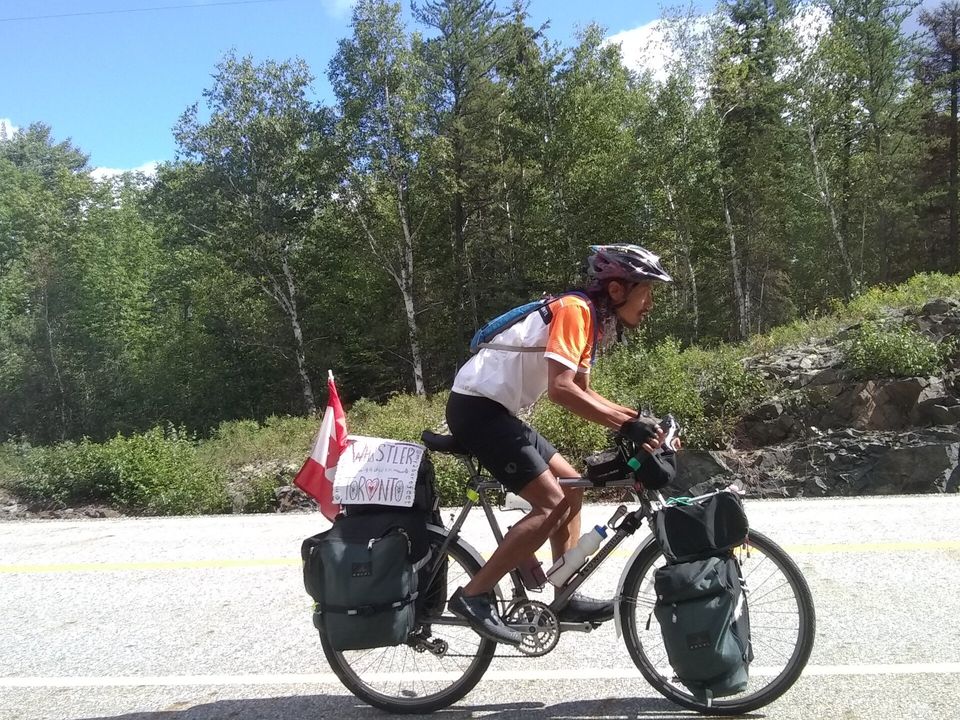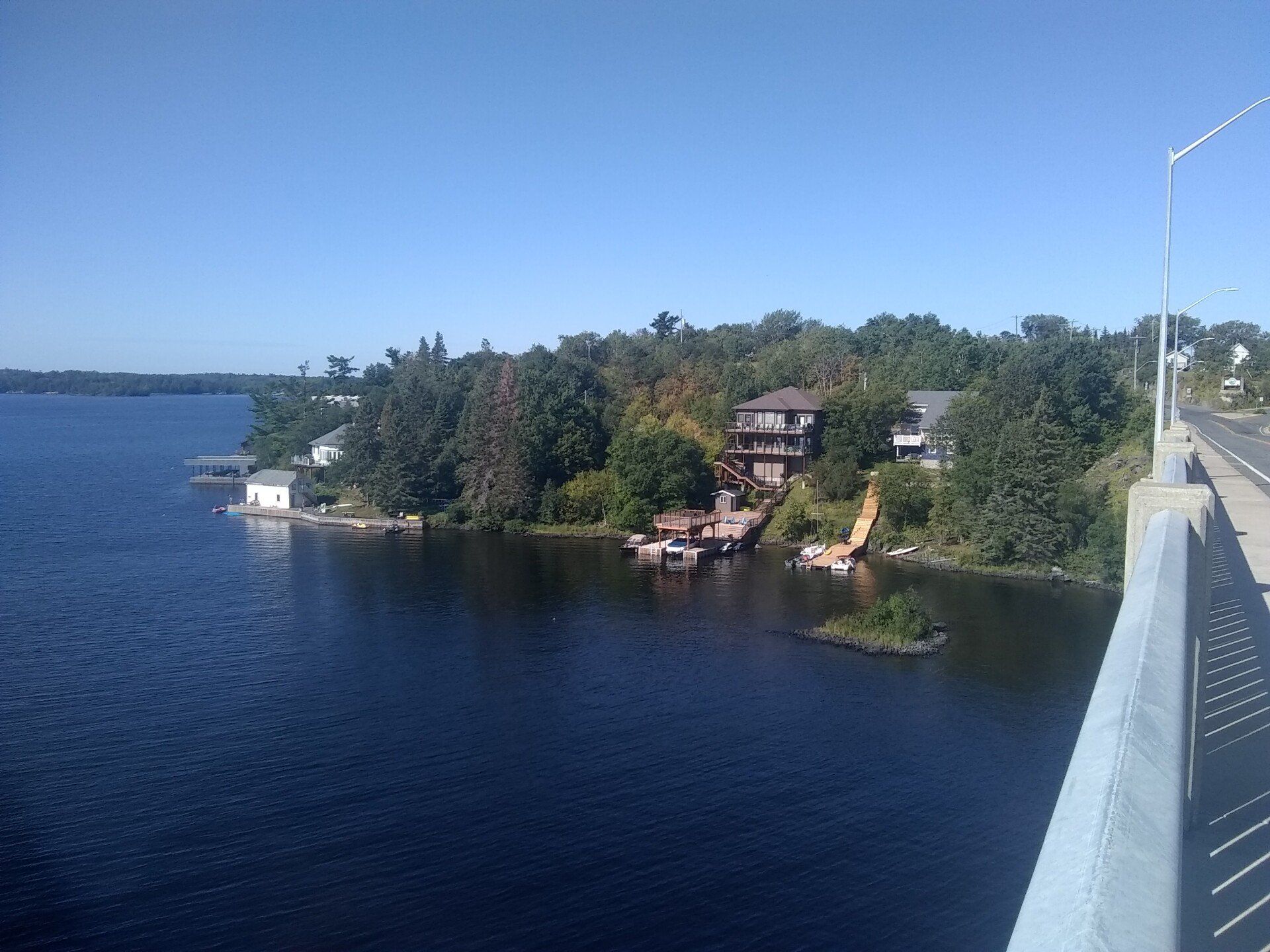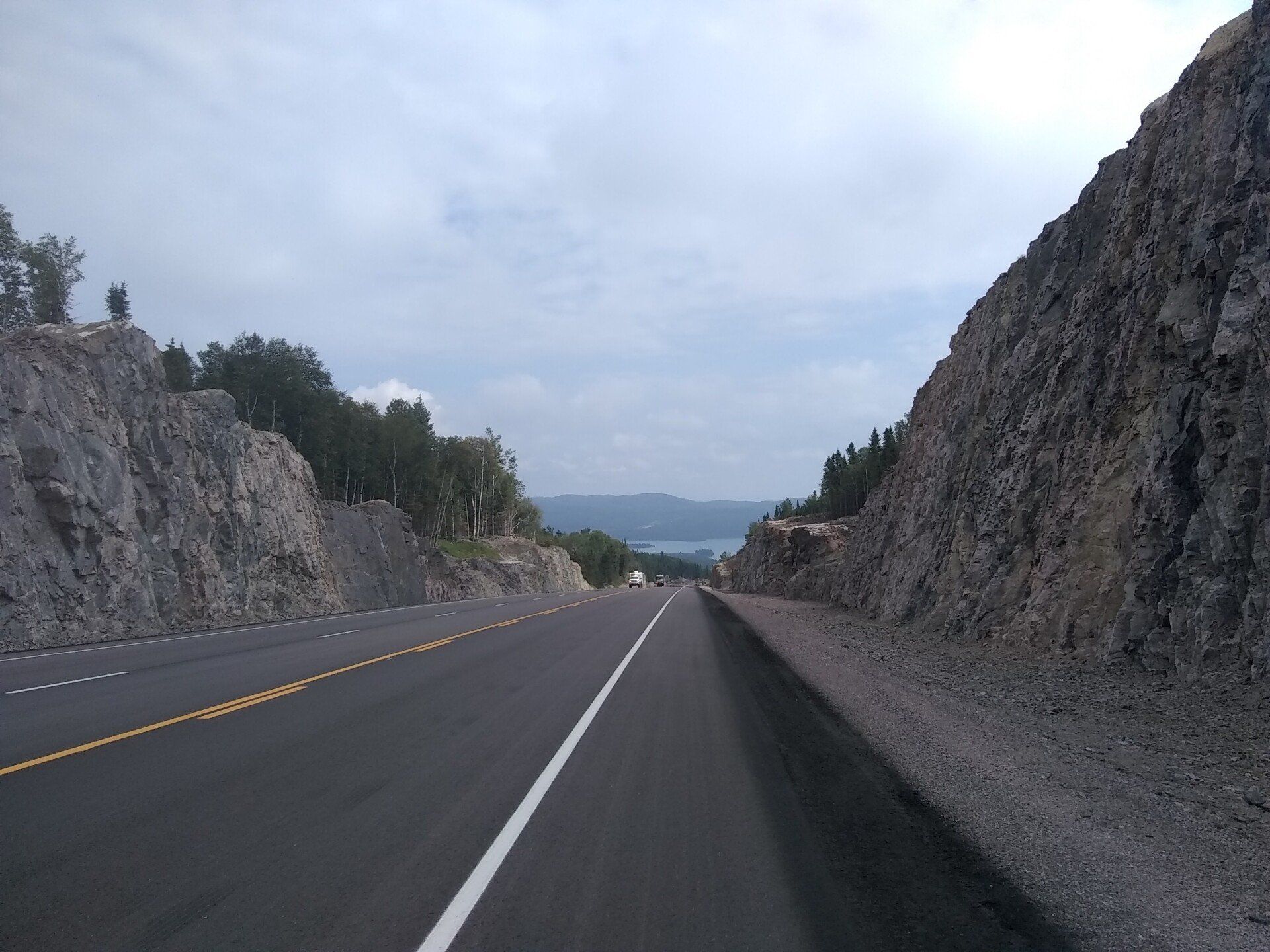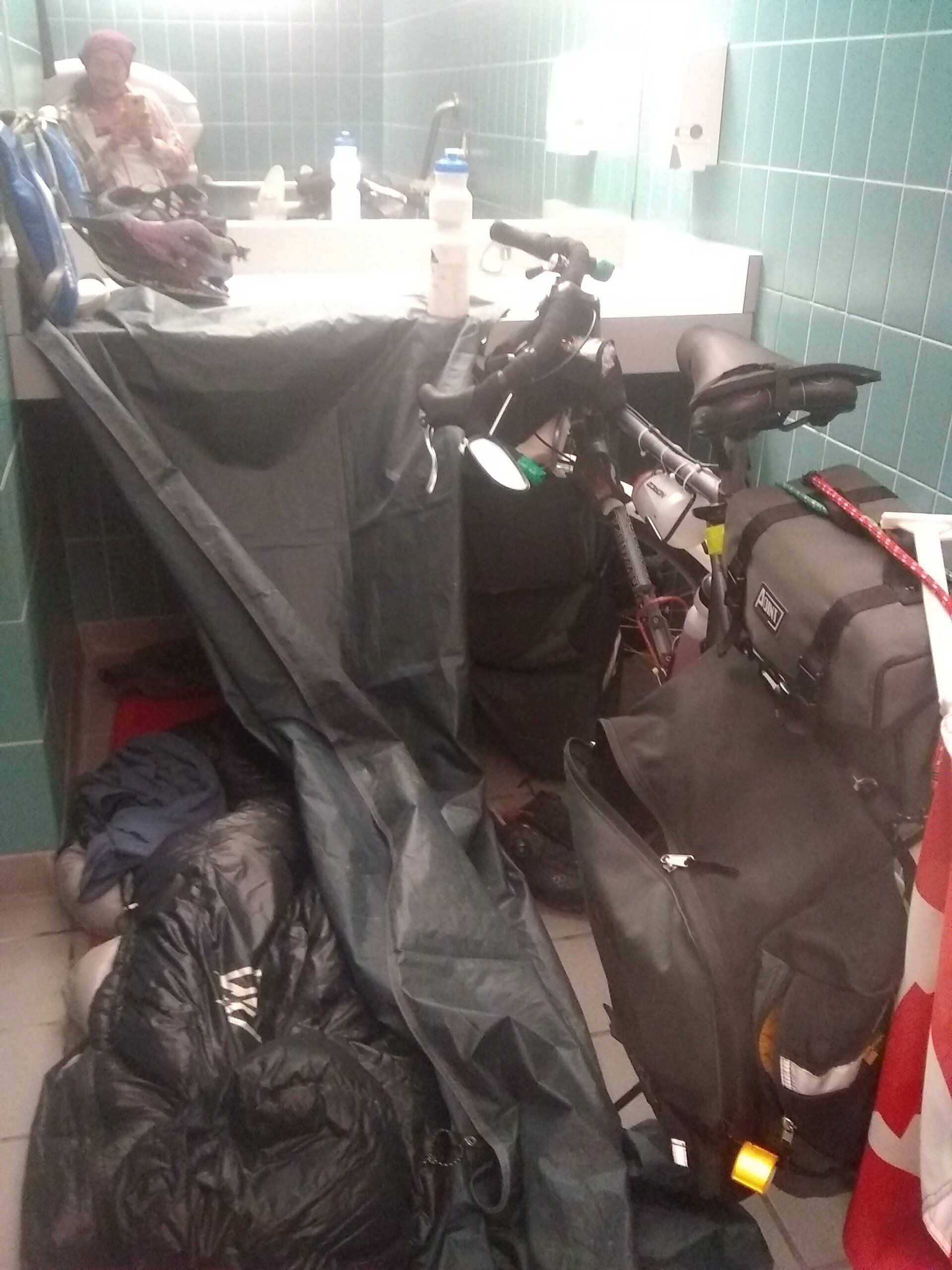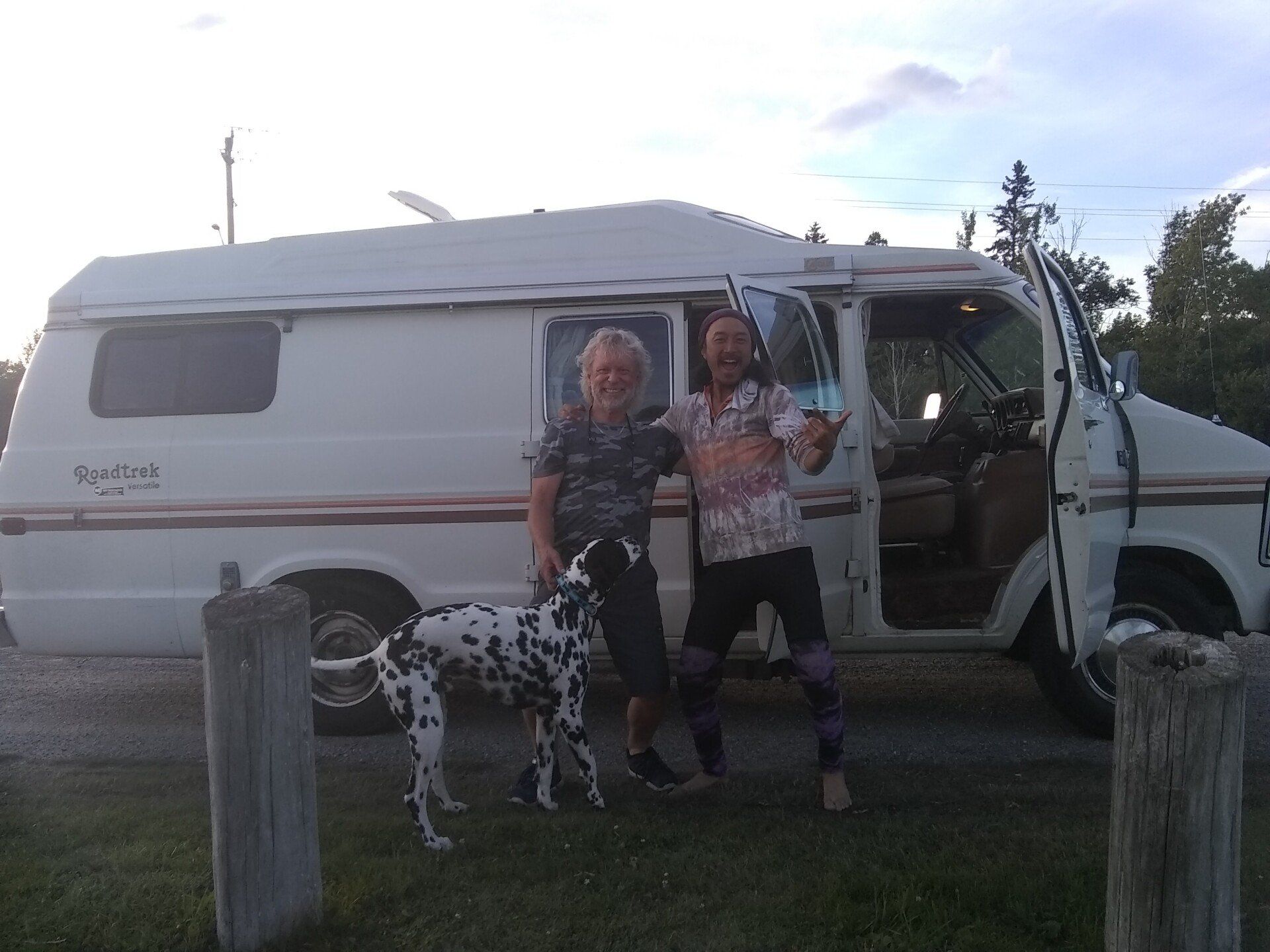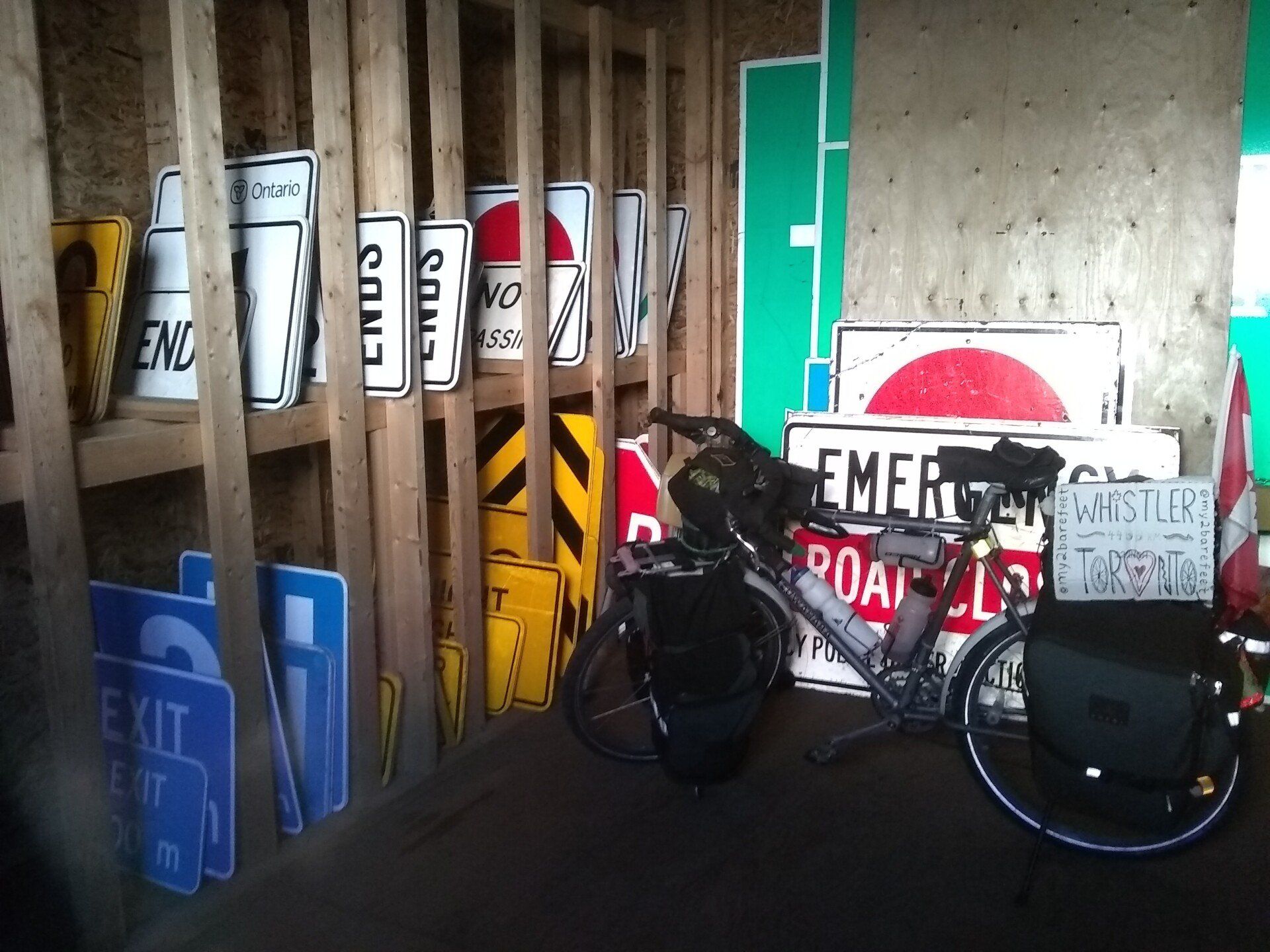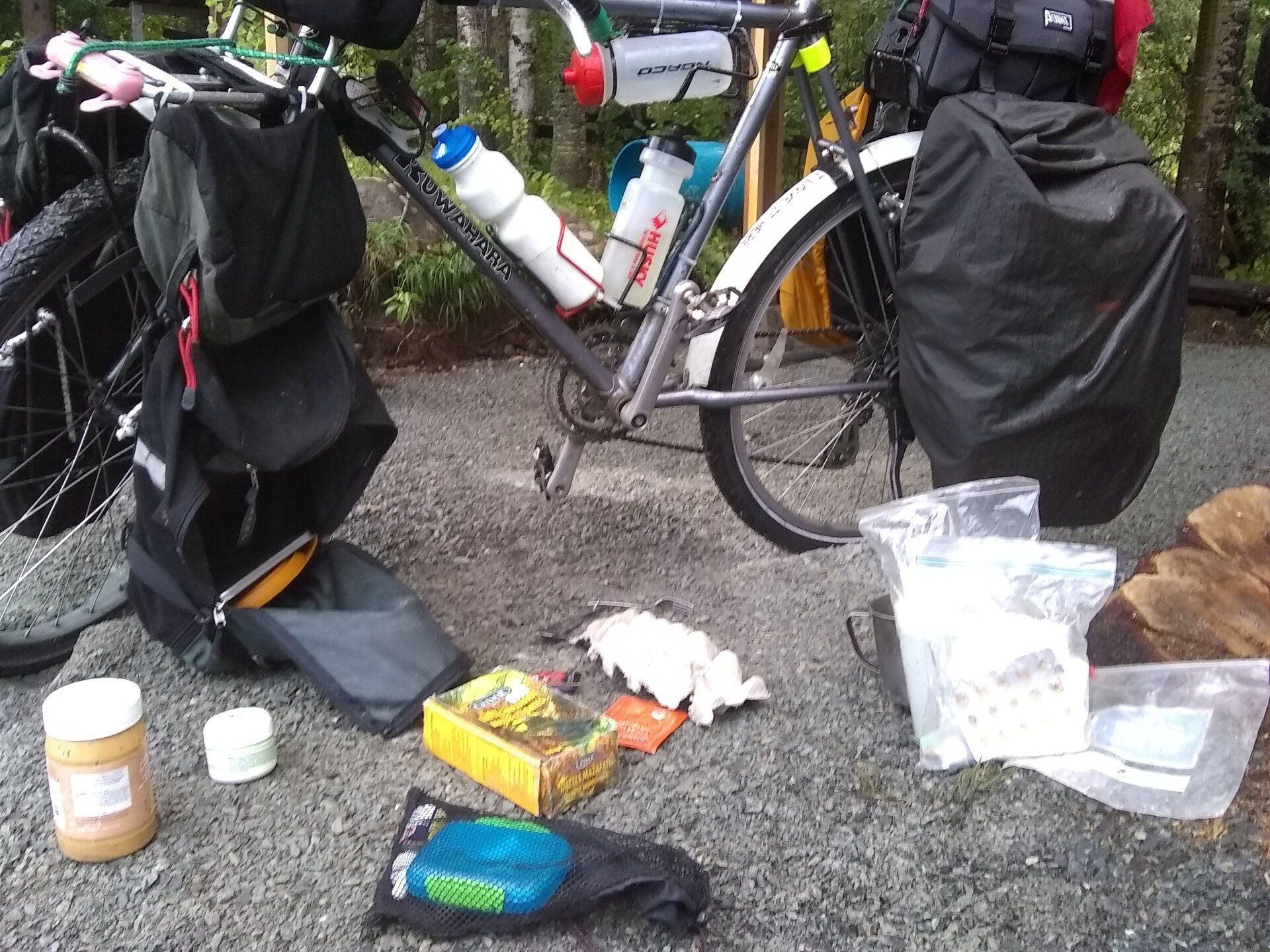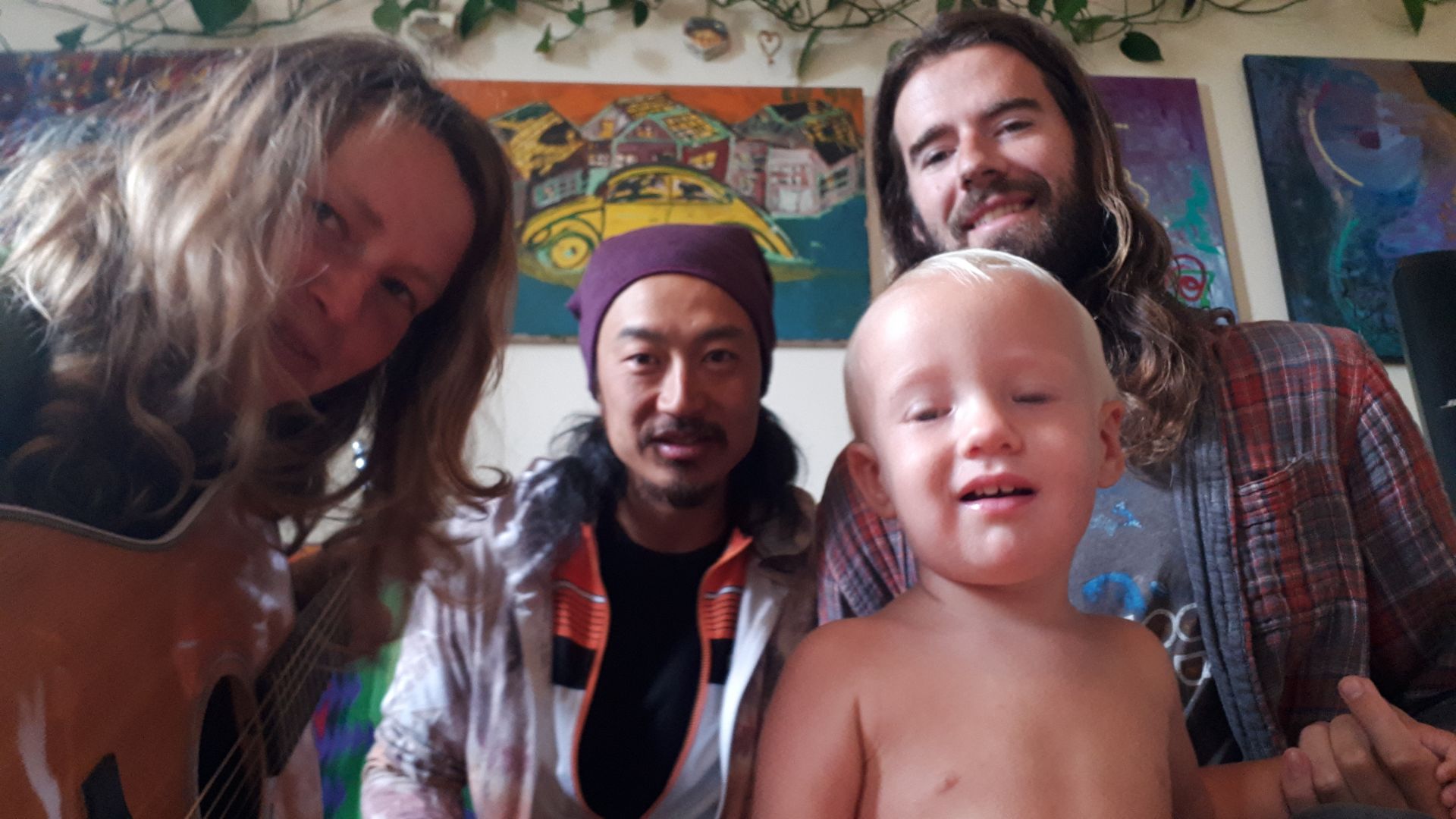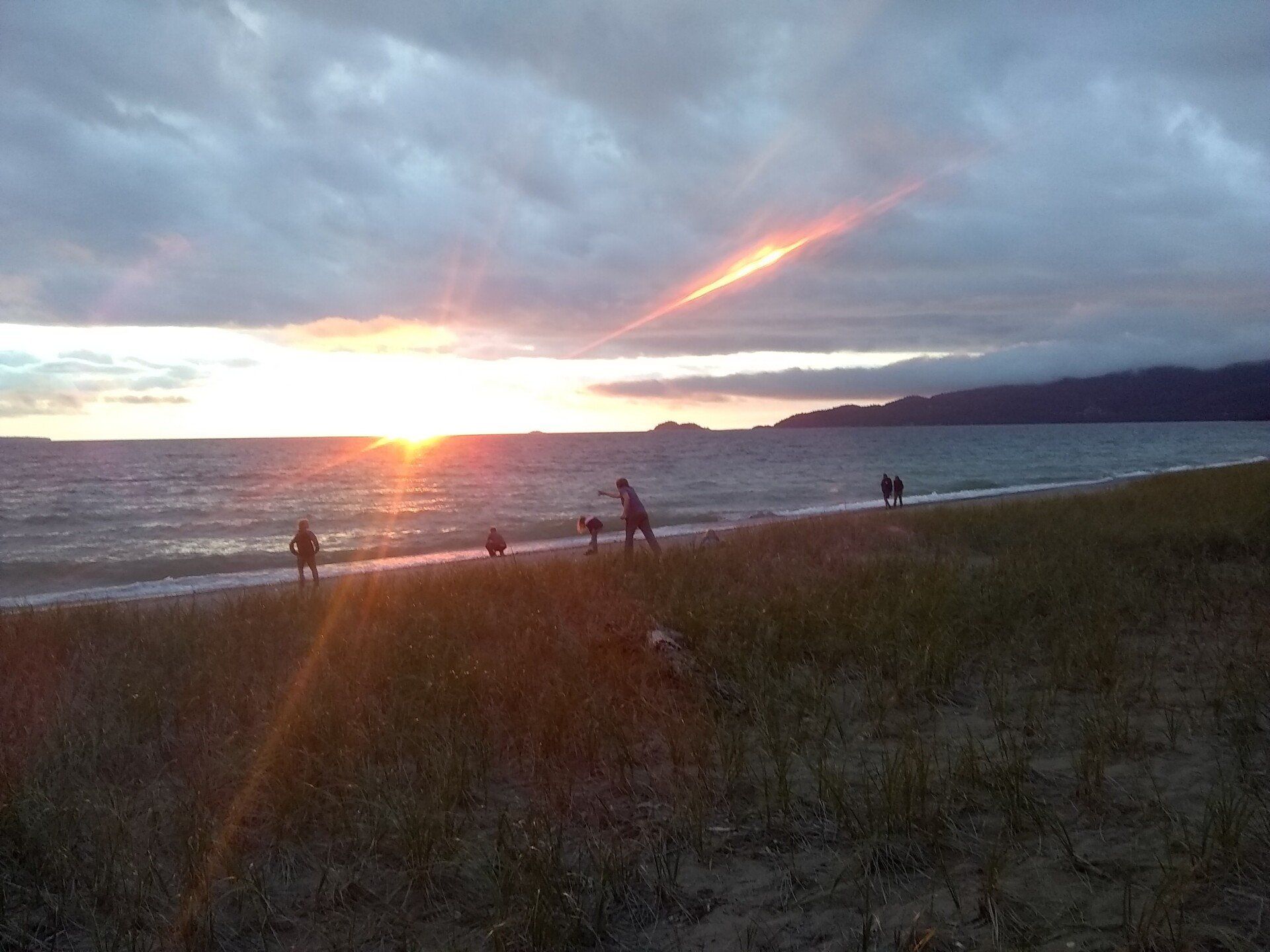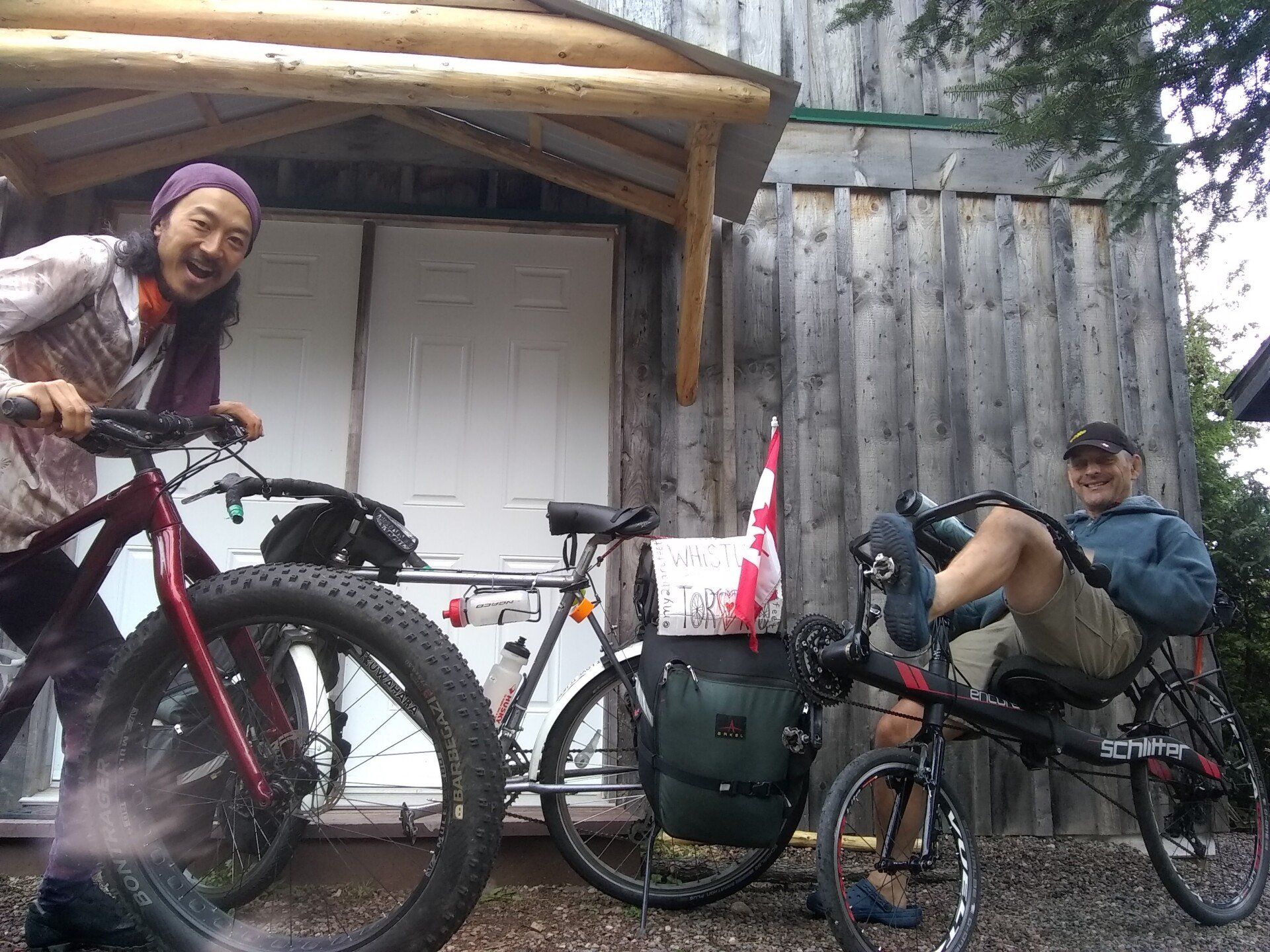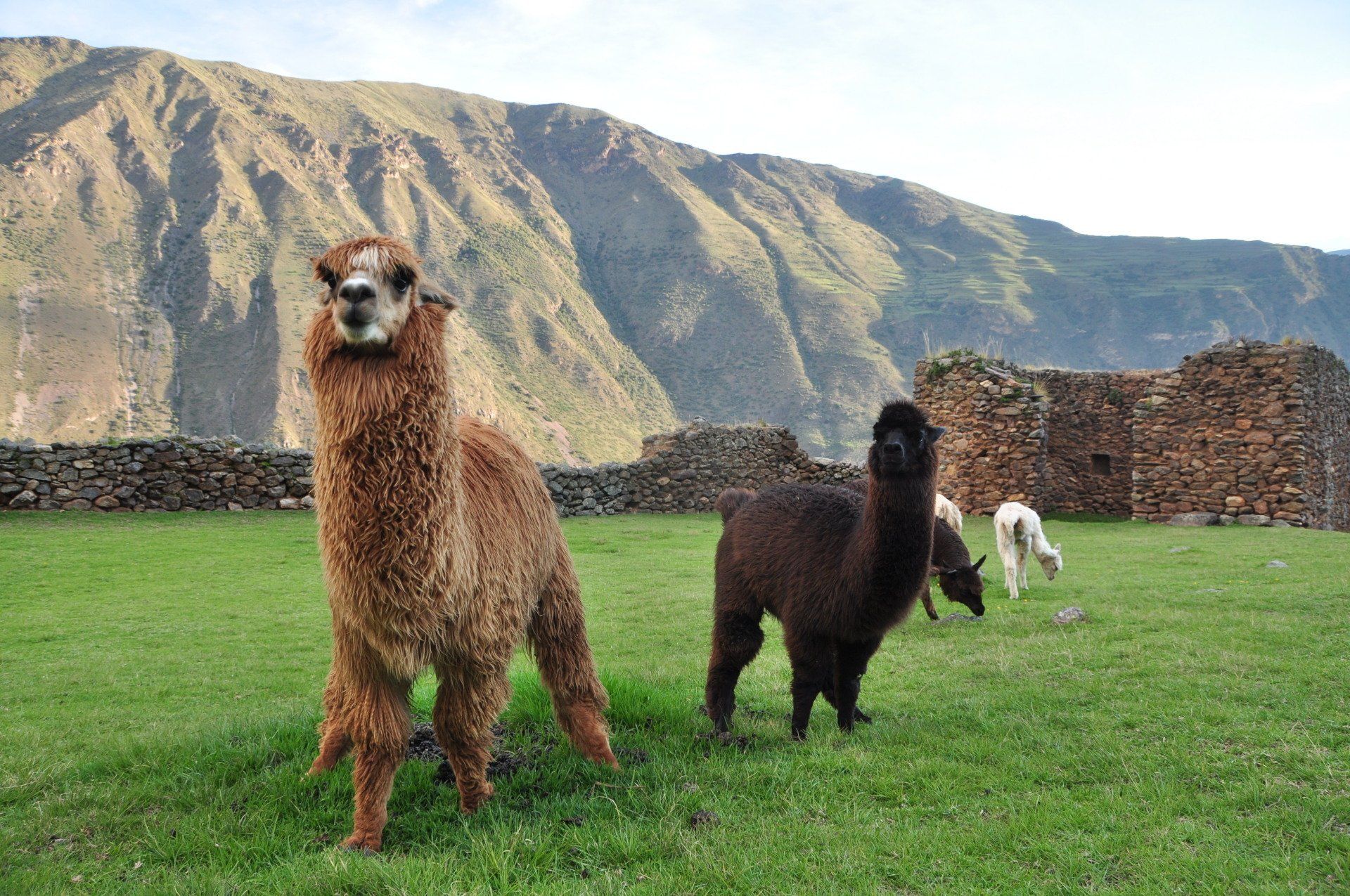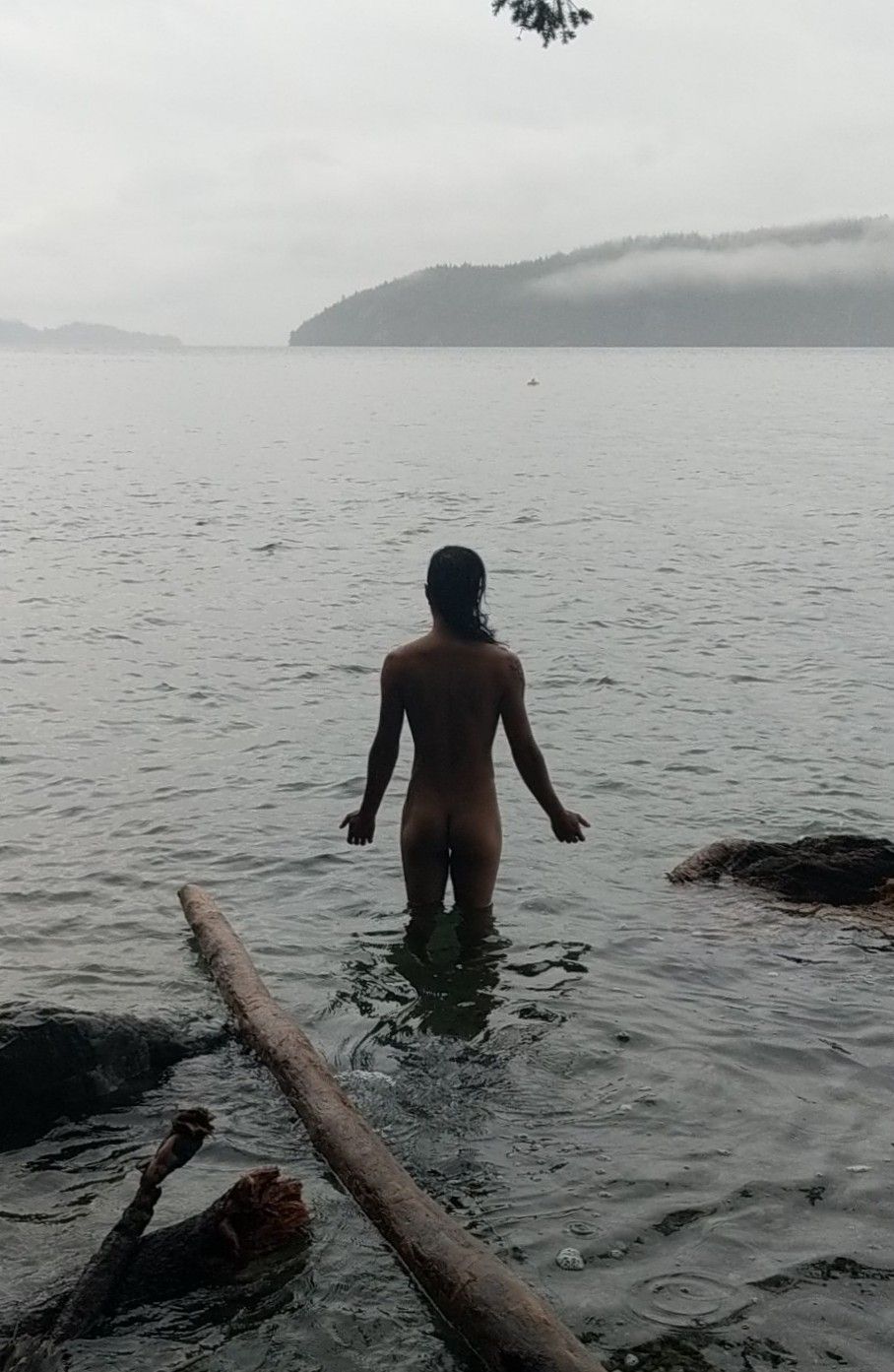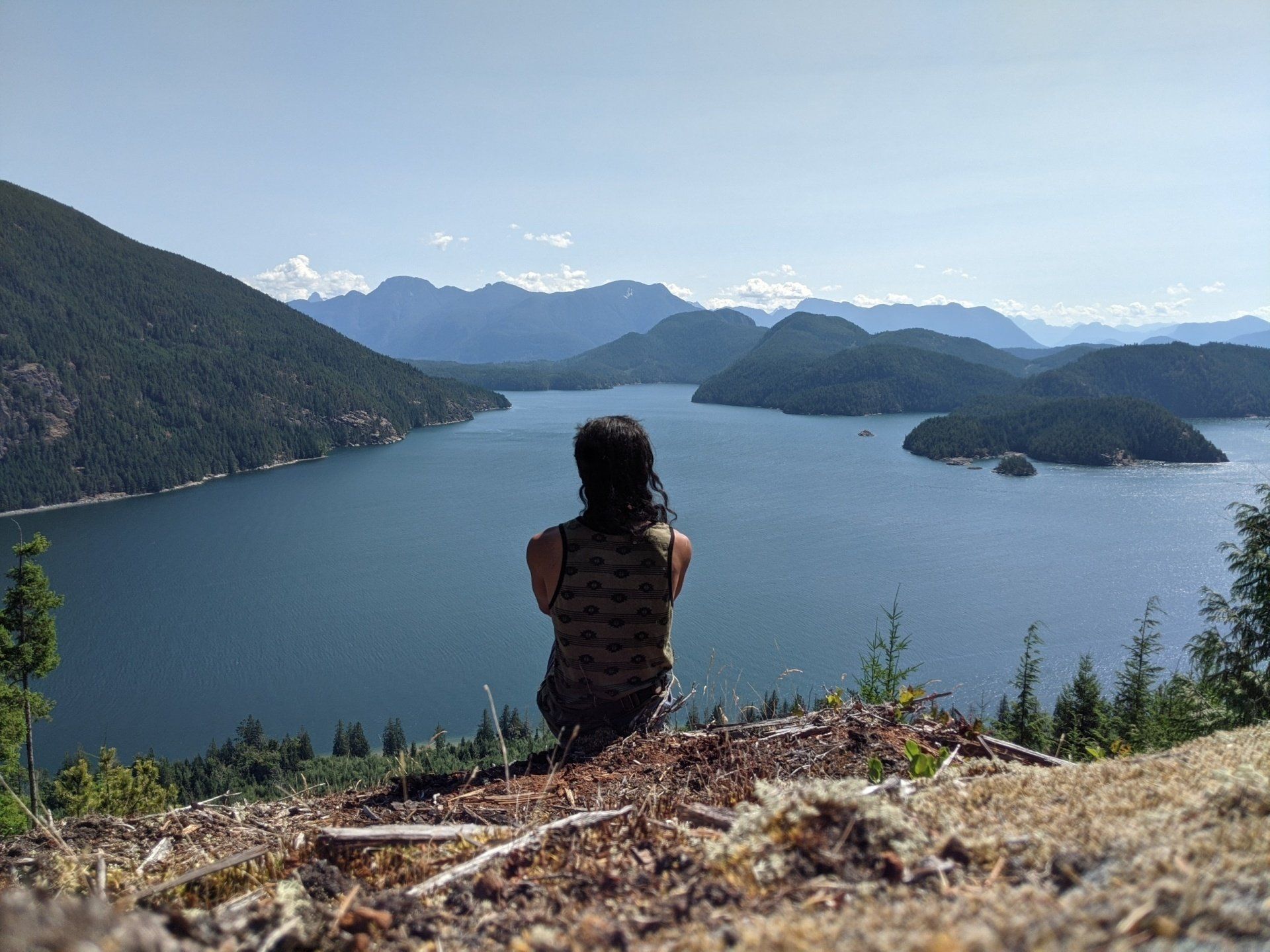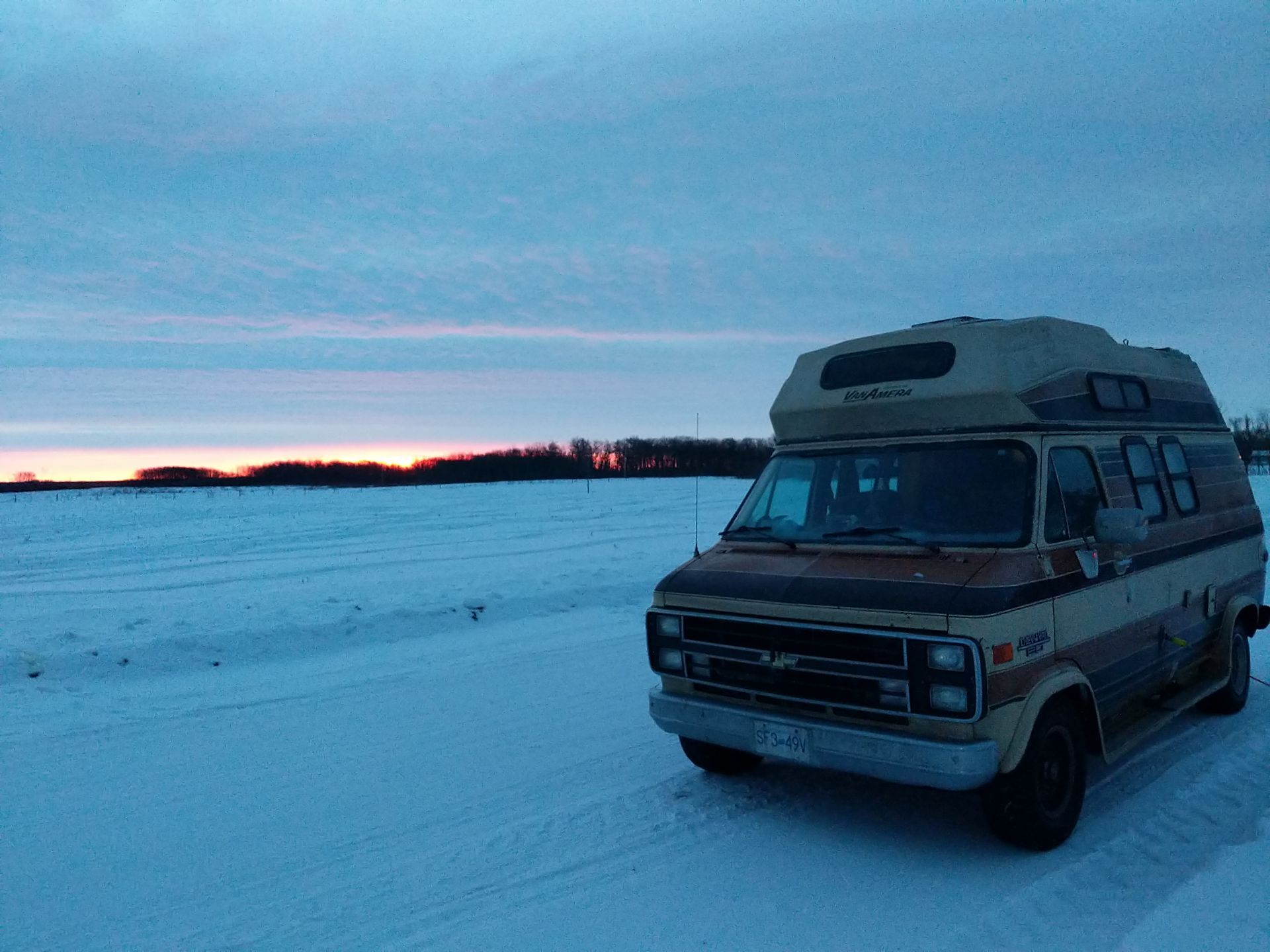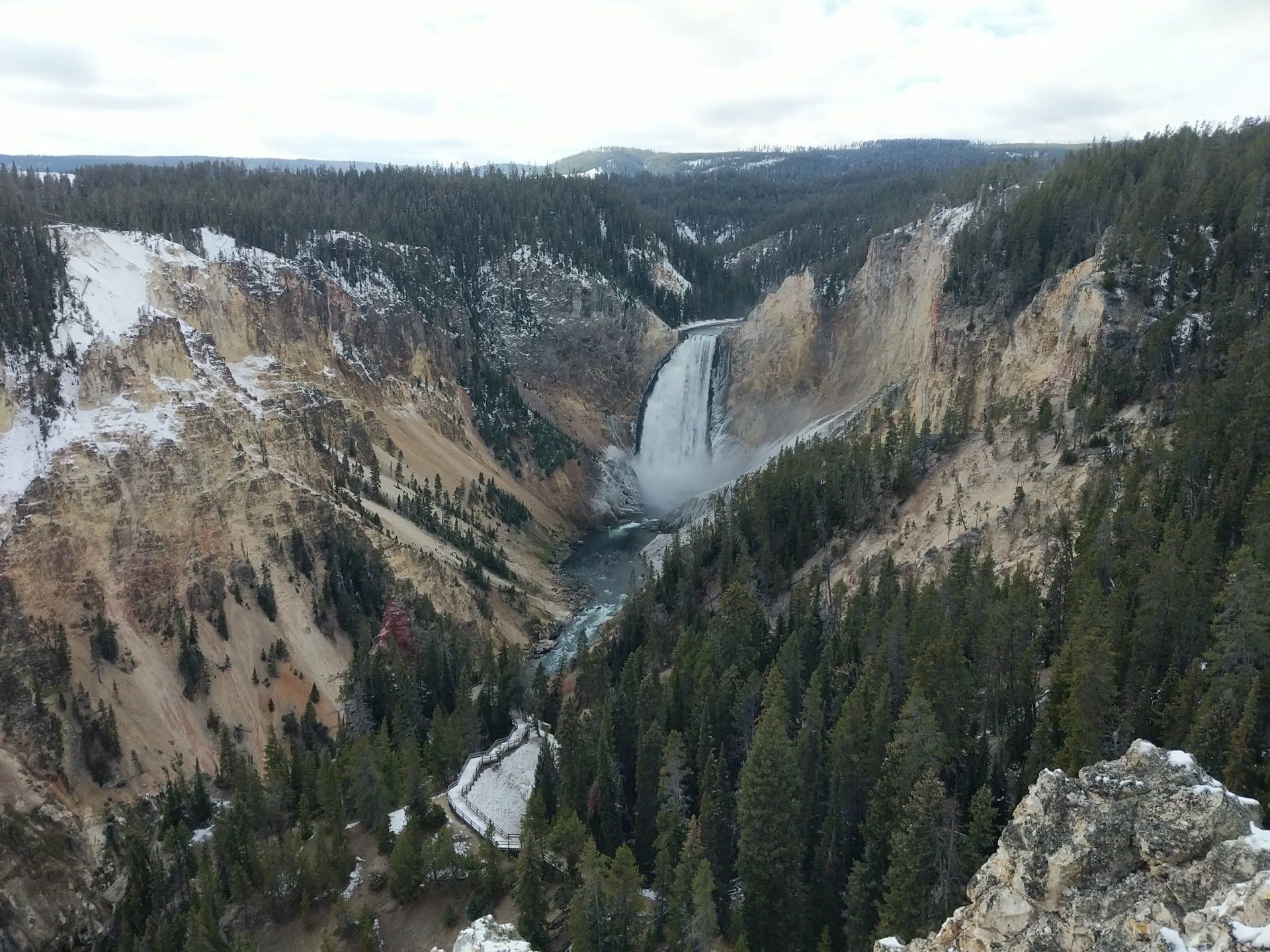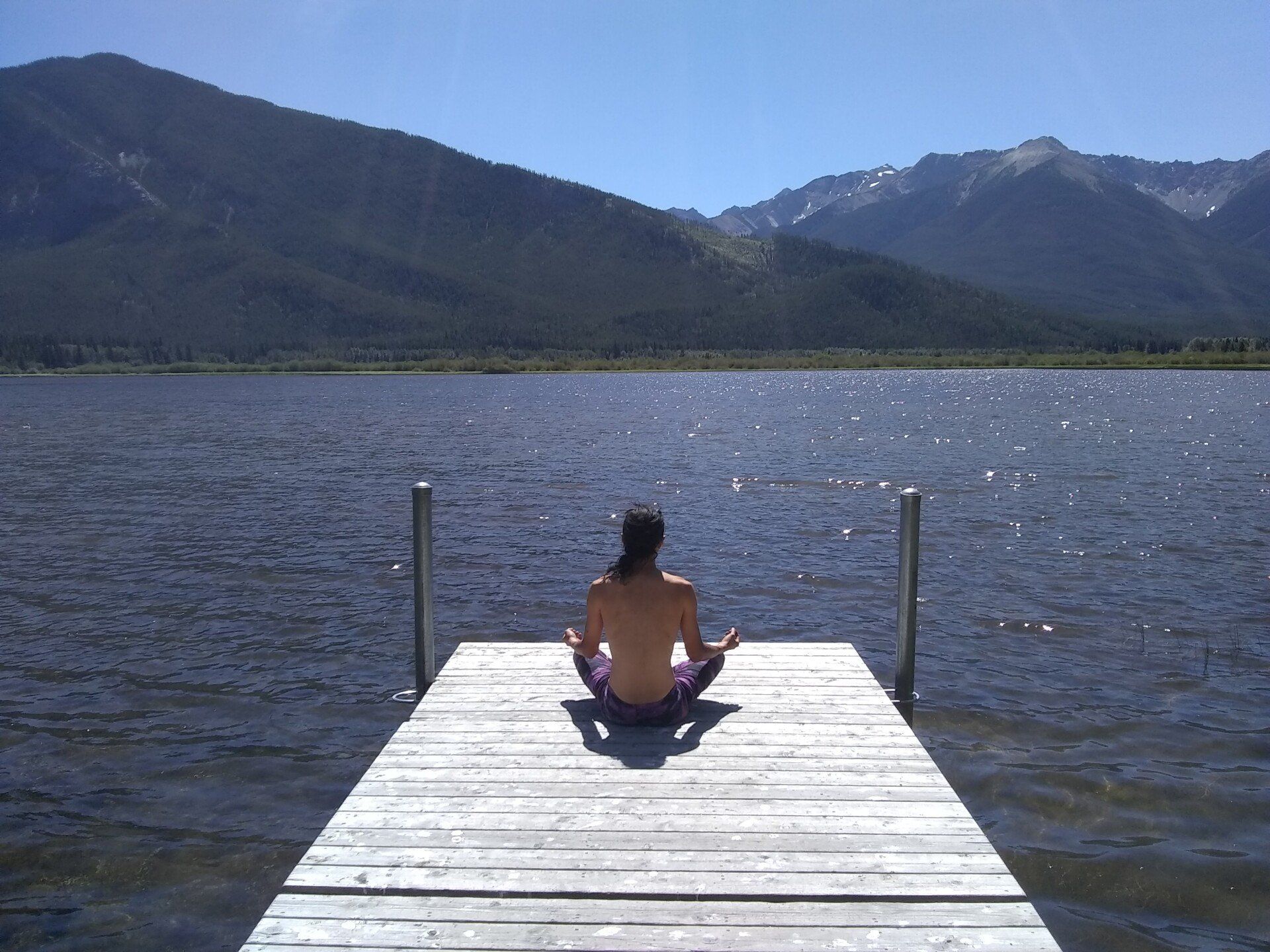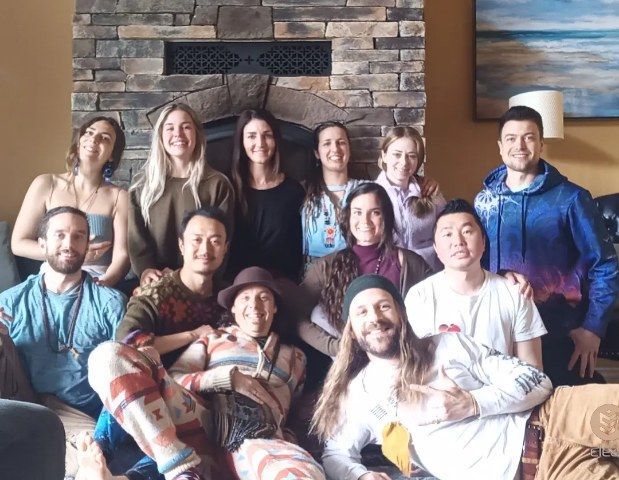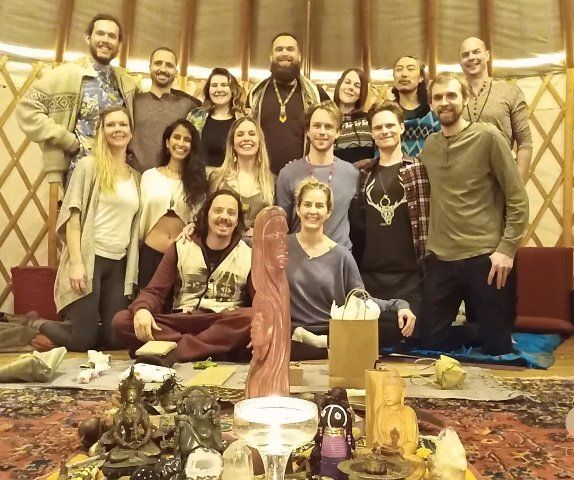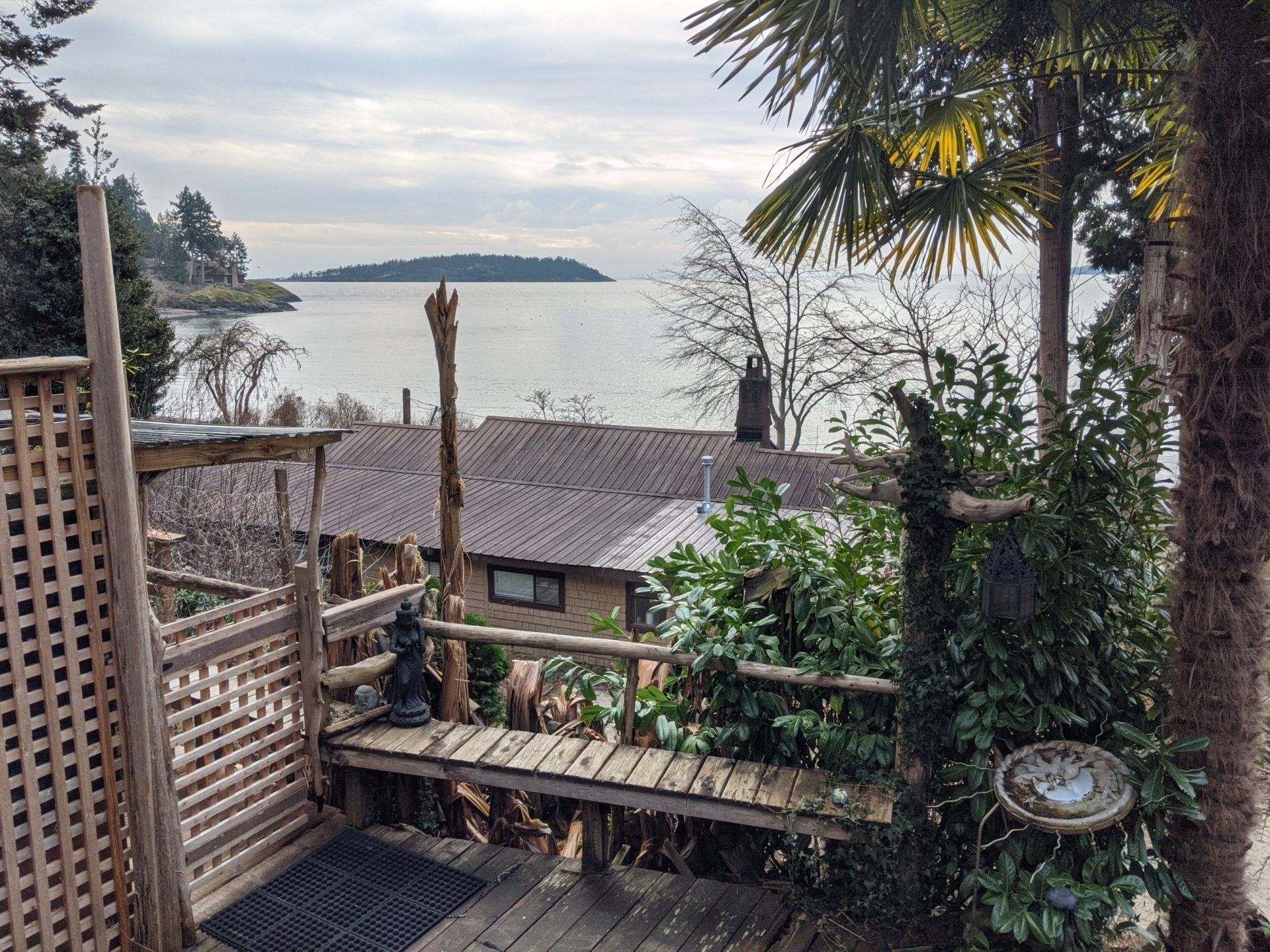All I Need is my Bicycle, Part 3: Shield
Ontario's rocky hills & forests - a cycle tourer's dream or nightmare?
Day 22-24 - Atikokan, 141 km; Shebandowan, 120 km; Thunder Bay, 92 km
This was an extremely difficult stretch of days - full on rolling hills through desolate wilderness. I pushed hard for Atikokan - there was only one hamlet in the middle where I was able to fill up water - but fell just short, legs burning with fatigue. But I did poke around a highway maintenance facility, and found an unlocked shed and slept in it!
If things weren't hard enough already, here comes the rain! I pulled in to an RV park in Shebandowan just as it started to pour. The owner of the RV park let me sleep in the downstairs part of her house, where her son lives but was out of town! I rushed indoors without taking my food bag with me and it got raided overnight by raccoons.
The next morning, the owner offered me another night's stay because there was a big storm in the forecast later - so kind of her! I decided to chance it though, so I left some cash as a gift, and took off. Just as I got into Thunder Bay it poured on me like never before, soaking through my not-so-waterproof layers. But I was glad for it. I had been lucky with rain up to now, so here was a chance to even out the karma. At least I was able to pull in to my friend's place shortly after to dry everything off.
We went for a walk in the forest and successfully identified crab brittlegill mushrooms with our field guide, then through a spore print. And made a beautiful omelette out of it! And yes, it tasted like crab.
Day 25-29 - Nipigon, 111 km; Terrace Bay, 105 km; Marathon, 84 km; White River, 99 km; Wawa, 92
My arrival in Thunder Bay signaled my arrival to Lake Superior. Lake Superior is the largest freshwater lake in the world by area, and third largest by volume. It is also famous for its scenery and its pristine beaches. The tradeoff? You can't have scenery without hills!
So far the hills in Northern Ontario were rolling so that it felt like one after the other, and pretty steep. After Thunder Bay, they started to get big - and I mean big! I was surprised that these hills were gnarlier than the ones in British Columbia. In fact, I later learned that this highway was constructed only about 50 years ago due to the challenging terrain. British Columbia's mountains may be much grander, but Ontario's highways are much steeper and frequent.
Along this stretch I happened to find a few more orthodox sleeping spots - in gazebos! In White River locals warned me that a bear was wandering around town. During my own wandering I found an unlocked gazebo behind a seniors home. Next day it poured on me again as I entered Wawa. I found another gazebo in a backyard, and this time I asked the homeowner, who granted me permission to use it!
Day 30-32 - Agawa Bay, 91 km; Spirit Bay, 52 km; Sault Ste Marie, 96 km
I left Wawa and entered Lake Superior Provincial Park, where the finest of the hills and beaches are concentrated. I have been ambitious all trip about making distance, so I'm glad I was able to pace myself sustainably through this difficult stretch, and enjoy the nature, taking 2 to 3 lake dips everyday to cool down the muscles. There were quite a lot of tourist spots in the park, and I had lots of nice conversations with curious and inspired people!
Just outside of Lake Superior Provincial Park I stayed with a Warmshowers host, Andre, at his cabin on Lake Superior. Andre is probably the coolest guy in Sault Ste Marie! He broke the speed record for a bicycle in Lake Superior Provincial Park - he rode a recumbent at an average 40 km/h! By contrast, I averaged maybe 11 km/h. He started the bicycle shop Velorution in Sault Ste Marie which hosts cycle tourers and fixes their bikes for free, and is a vocal advocate for bicycle infrastructure in his community.
I was very tempted to stay another day on his idyllic property, but I figured I'd come back another time as we connected really well. I took off on yet another blustery rainy day to Sault Ste Marie, where I happened to run into a bunch of his friends. One of them let me stay in his backyard.
And just like that I was finally out of the Canadian Shield. It took me 13 days to complete this leg, including 8 days just to clear Lake Superior! There would still be more hills moving forward but not nearly as daunting.
My legs were weary from the slog but my spirits were high! After 32 days of riding I completed 3870 km, maintaining over 100 km average despite slowing down in Ontario. I was truly in the home stretch, less than 600 km to go, and sensing home.


